FMRP activity and control of Csw/SHP2 translation regulate MAPK-dependent synaptic transmission
- PMID: 36701299
- PMCID: PMC9879533
- DOI: 10.1371/journal.pbio.3001969
FMRP activity and control of Csw/SHP2 translation regulate MAPK-dependent synaptic transmission
Abstract
Noonan syndrome (NS) and NS with multiple lentigines (NSML) cognitive dysfunction are linked to SH2 domain-containing protein tyrosine phosphatase-2 (SHP2) gain-of-function (GoF) and loss-of-function (LoF), respectively. In Drosophila disease models, we find both SHP2 mutations from human patients and corkscrew (csw) homolog LoF/GoF elevate glutamatergic transmission. Cell-targeted RNAi and neurotransmitter release analyses reveal a presynaptic requirement. Consistently, all mutants exhibit reduced synaptic depression during high-frequency stimulation. Both LoF and GoF mutants also show impaired synaptic plasticity, including reduced facilitation, augmentation, and post-tetanic potentiation. NS/NSML diseases are characterized by elevated MAPK/ERK signaling, and drugs suppressing this signaling restore normal neurotransmission in mutants. Fragile X syndrome (FXS) is likewise characterized by elevated MAPK/ERK signaling. Fragile X Mental Retardation Protein (FMRP) binds csw mRNA and neuronal Csw protein is elevated in Drosophila fragile X mental retardation 1 (dfmr1) nulls. Moreover, phosphorylated ERK (pERK) is increased in dfmr1 and csw null presynaptic boutons. We find presynaptic pERK activation in response to stimulation is reduced in dfmr1 and csw nulls. Trans-heterozygous csw/+; dfmr1/+ recapitulate elevated presynaptic pERK activation and function, showing FMRP and Csw/SHP2 act within the same signaling pathway. Thus, a FMRP and SHP2 MAPK/ERK regulative mechanism controls basal and activity-dependent neurotransmission strength.
Copyright: © 2023 Leahy et al. This is an open access article distributed under the terms of the Creative Commons Attribution License, which permits unrestricted use, distribution, and reproduction in any medium, provided the original author and source are credited.
Conflict of interest statement
The authors have declared that no competing interests exist.
Figures
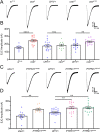
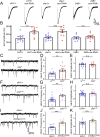
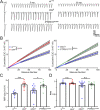
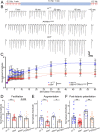
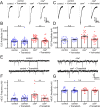
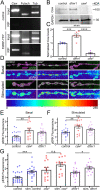
References
Publication types
MeSH terms
Substances
Grants and funding
LinkOut - more resources
Full Text Sources
Molecular Biology Databases
Miscellaneous

